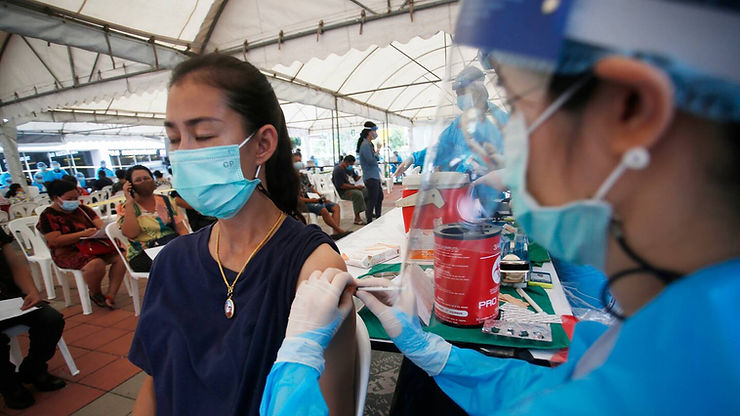How a coalition of clinicians, academics, NGOs, and local leaders can outsmart the social media chaos, bypass government bottlenecks, and deliver life-saving public health information to the communities that need it most.
When the dust of the pandemic settled, one truth remained clear: the public’s trust in federal health agencies had taken a staggering hit. Despite monumental efforts to save lives and distribute vaccines, the gap between public health authorities and the communities they serve has only widened. This is no longer just a political problem. It’s a national health emergency—and clinicians, academics, and non-profit organizations (NGO) are uniquely positioned to fix it.
The Biden administration entered office hoping to restore trust in public health institutions. However, as outgoing Health and Human Services Secretary Xavier Becerra revealed in a recent interview with the Washington Post, the government is losing the information war against social media disinformation. The reasons are as systemic as they are troubling: political interference, bureaucratic inertia, and the lightning-fast pace of viral falsehood.
But here’s the good news: we don’t need to wait for the new administration—or the next budget cycle—to make change happen. Clinicians, academics, NGOs, and local health departments already have the tools, knowledge, and trust of their communities to do what the federal government cannot: deliver timely, accurate, and actionable health information directly to the public. This isn’t just resistance—it’s a responsibility. And it’s an opportunity for the public health community to lead from the frontlines.
A Framework for Public Health’s Next Revolution
To take back control of the narrative, we propose a five-pronged strategy to mobilize healthcare professionals, academic leaders, and community advocates. Together, they can bypass political bottlenecks and build a decentralized, resilient public health communications network.

1. Clinician-Led Advocacy: Clinicians—whether they’re physicians, veterinarians, nurses, physician assistants, or social workers—are some of the most trusted voices in health communication. By equipping them with ready-to-share, evidence-based resources, and social and traditional media training, we can turn every patient interaction into an opportunity to dispel disinformation. Hospitals and health systems should actively train staff to address health myths and share accurate information on social platforms. Clinicians are already on the frontlines of public health; now, they need the tools to become trusted voices in the digital space.
2. Collaboration with Academia: Public health researchers are experts at distilling complex data into actionable insights. By partnering with clinicians and NGOs, academics can help ensure that the most up-to-date science reaches the public—not through lengthy journals but bite-sized, digestible narratives that resonate on social media. These partnerships can also provide an evidence-based counterweight to the political pressures that often skew federal health messaging.
3. Building Community-Based Networks: NGOs and local health departments have boots on the ground in communities where federal agencies struggle to make an impact. By creating regional information-sharing hubs, these organizations can connect directly with clinicians and academics to develop hyperlocal campaigns tailored to their communities’ unique needs. Imagine a world where your local health department isn’t just responding to crises but proactively combating disinformation in real-time.
4. Harnessing the Power of Micro-Influencers: Social media is the battleground where public opinion is won or lost. While federal agencies may struggle to compete with viral influencers, local clinicians, community leaders, and advocates can step into the void. By empowering these “micro-influencers” with compelling, evidence-based content, we can amplify their voices and create a ripple effect of trust and engagement. It’s time to stop viewing social media as a threat and start using it as a tool for public health advocacy.
5. Decentralizing the Message: The federal government doesn’t need to be public health’s sole—or even primary—messenger. A decentralized approach, led by coalitions of clinicians, NGOs, universities, and local leaders, can ensure that accurate information reaches the public even when federal messaging is stifled or politicized. This isn’t about undermining federal agencies. It’s about filling the gaps where they cannot or will not act in today’s climate.
Why This Matters: The Stakes Are Higher Than Ever
Misinformation is not just a nuisance—it’s deadly. During the pandemic, false claims about vaccines, masks, and treatments cost countless lives. And the problem isn’t going away. Disinformation campaigns—whether driven by political agendas, foreign actors, or anti-science movements—will only grow more sophisticated in the years to come.
For U.S. Veterans, the stakes are exceptionally high. Delays in care, confusion about benefits, and fear of health interventions can have devastating consequences. However, veterans are also uniquely positioned to benefit from these coalitions. Local VA hospitals, clinicians, and veteran advocacy groups can collaborate to create a model for local community-based health communication that can be replicated nationwide. This is also about trust—not just in public health, but in democracy itself. If we lose the fight against disinformation, we lose the ability to protect the most vulnerable among us.
A Call to Action
Public health communications professionals, clinicians, academics, and advocates: this is your moment. Together, we have the power to rebuild trust, fight disinformation, and ensure that communities have the information they need to make life-saving decisions.
The federal government may be constrained by politics, but we are not. It’s time to harness our collective expertise, resources, and influence to create a decentralized, people-powered public health communications network. This isn’t just a fight for the truth. It’s a fight for the lives of our neighbors and our future.
Let’s rise to the challenge.
